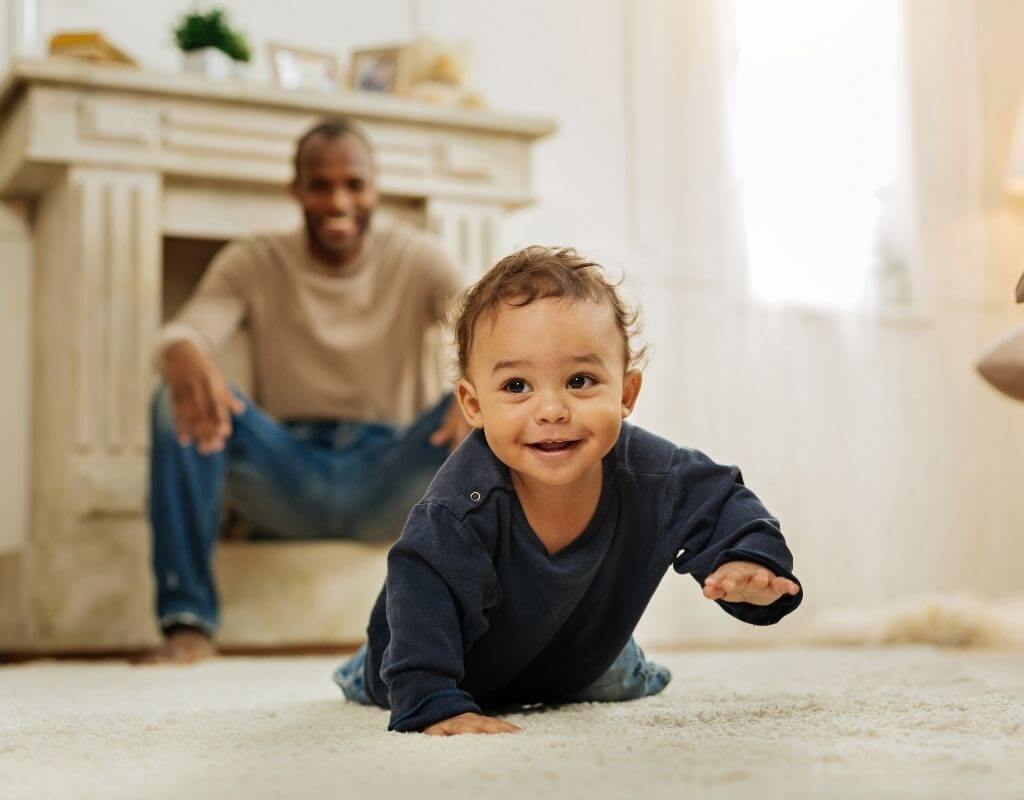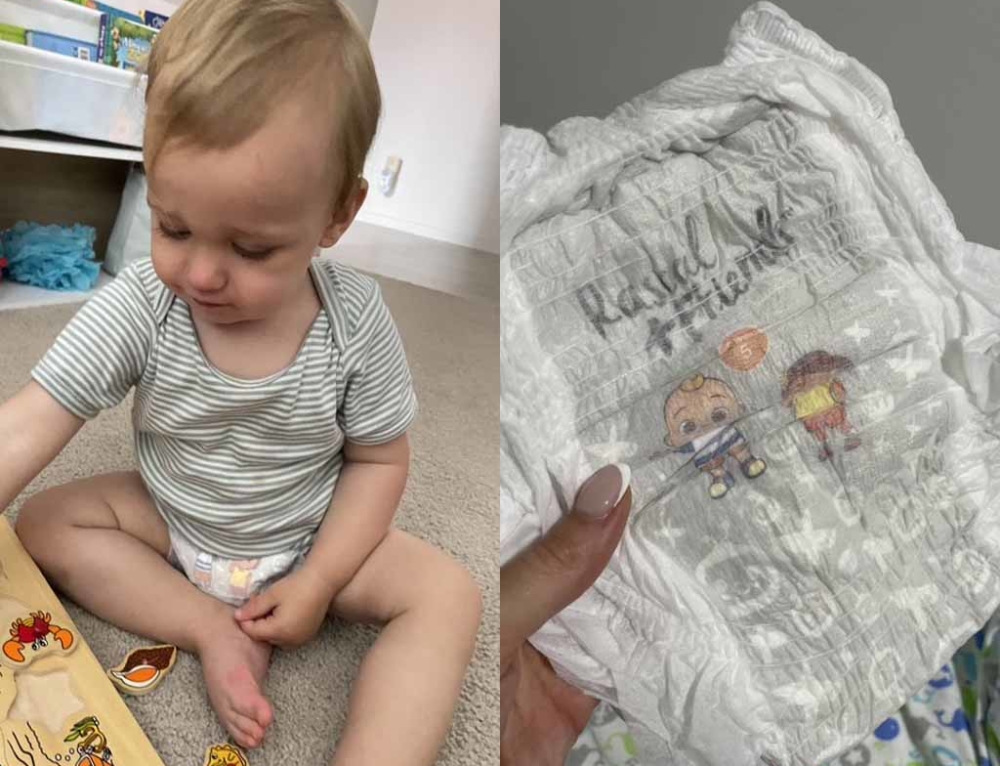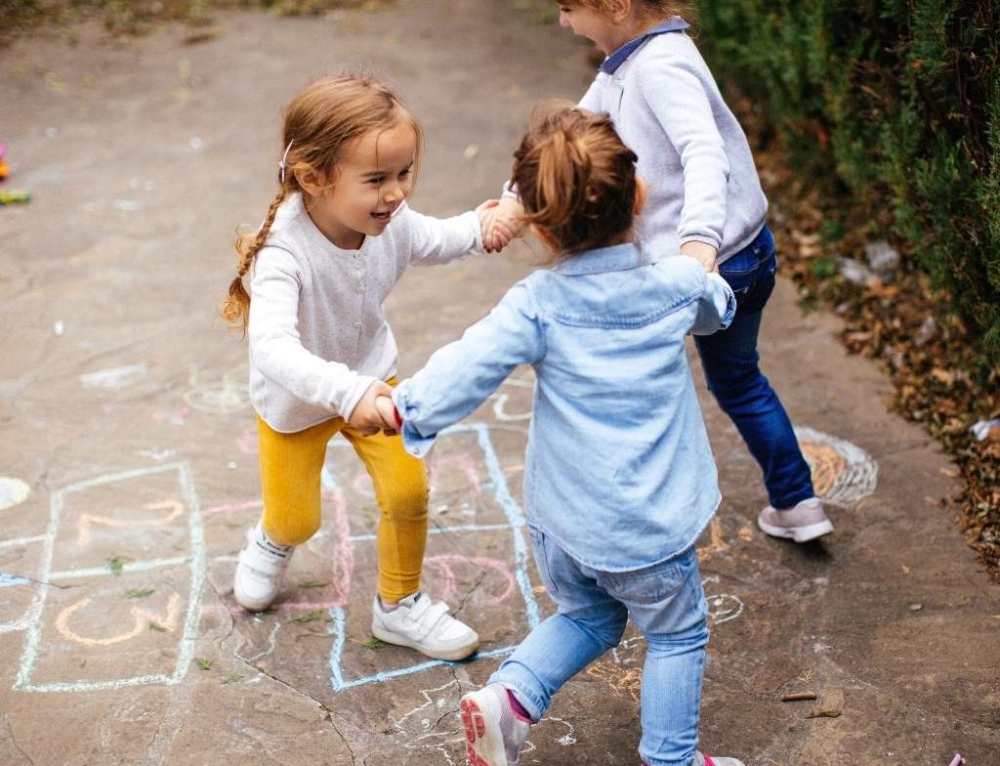We all know the golden rules for keeping healthy. Not that we tend to stick to them too rigorously! Probably the most important is exercise – getting up and moving to keep our bodies working. Whilst adults do it for fitness or to keep their figure (or to improve on what our indulgences have landed us with), babies require movement for a different reason.
Scientific studies have shown that your child’s future development is highly dependent upon the way he uses his senses in the early months of life. Babies who experience sensory stimulation develop better concentration and memory and are more inquisitive. They also reach developmental milestones earlier.
The link between the activities that a baby performs during the early months and the skills needed for later in life are amazing. For example, when your baby crawls he’s not just trying to get into as much mischief as possible. He’s also learning about the coordination of his body and limbs, improving balance and sending messages to his brain about touch, texture and position. He is developing visual skills by varying his focus from a toy far away to the floor in front of him, which is the same focal distance to a book when he learns to read! He improves his rhythm and timing and develops his muscles which in turn aids in the later development of fine motor skills, such as writing.
The benefits of movement
Even newborns can benefit from movement. Gentle activities cause fluid in the inner ear to pass over nerve endings which send messages to the brain about body position and help your baby to attain balance. This is known as vestibular stimulation.
To aid in your baby’s movement remember to dress baby appropriately. Opt for clothes that do not inhibit his movements or frustrate his attempts to wriggle, reach, kick, roll and crawl. Freedom of movement is important and non-restrictive clothing is great for letting him explore as much as he wishes.
Remember not to rush your baby’s development though. Each stage of baby’s life is important in it’s own way. For instance, baby will sit himself when his back muscles are sufficiently strong enough. So it is not how early your child walks that is important but how much he learns about himself and the world around him before he walks that will influence his development. As long as you provide the appropriate opportunities for development, nature will take its course.
Here’s a few tips that you will find useful for stimulating your baby’s senses and development right from the beginning.
Top 10 tips to move with your newborn
- Get out and about and enjoy a stroll with your newborn in the pram. The gentle motion both comforts and assists with balance.
- Cuddle up with your newborn in an old fashioned rocking chair and let the rocking movement comfort him.
- Try out a finger rhyme (using his fingers), so he can enjoy his newly discovered hands – and don’t forget those toes!
- Whilst changing his nappy, enable your newborn to become more aware of his body by moving and stroking his arms and legs whilst making silly noises.
- Play a slower version of “Pat-a-Cake” while you gently move his hands in time with the rhyme.
- Learn a few techniques of baby massage and enjoy some quality and quiet time with baby.
- Gently encourage your baby to point a finger and then move the finger to touch his nose, his cheek, his belly, your nose and more.
- Make some noise with a rattle and wait until he has turned his head to see the source. Then move the rattle around coming from different directions.
- At one month old you can start placing your baby on his tummy for short periods to help him stregthen his neck muscles.
- When he can hold his head up it’s time for take off! Lie down and lift your baby up into the air – crash slowly down for a sloppy kiss.
Top 10 tips to move with your baby
- It’s time to get wet! Baby swimming lessons are a fantastic activity and a fun way to stimulate baby’s development.
- Play with your baby using a large beach ball or gym ball, sitting and lying him on it on his back and front and gently rocking back and forth.
- Help your baby to practice reaching out for objects by holding a toy in front of him and encouraging him to reach for it.
- Get jiggy with it! Dance and swing your baby gently in your arms or sing and bounce your baby on your knees with their favourite nursery rhyme.
- Hold your baby upright on a flat surface and watch those legs start to move in preparation for walking.
- With baby on his tummy, roll a soft ball toward him so he has to stretch out his arms to grasp the ball. Encourage him to roll it back to you.
- Encourage his commando movement across the floor by moving him into another room with new textures and objects to explore.
- Sit facing each other with the bottom of your feet touching and roll a ball back and forth, stretching to grab it.
- Work those arms and legs and motivate him to crawl by clapping your hands and motioning him to come towards you. Use a favourite toy to grab his attention.
- In the bath, let him splash and kick in the water. Introduce simple bath toys like funnels, cups and sponges to encourage his exploration.
Top 10 tips to move with your toddler
- Draw the curtains, switch off the lights and use torches to create shapes and shadows on the wall by moving and adjusting his body in different ways.
- Extend a fun game of musical statues to include different types of movement, ie move like an elephant, jump like a frog or march to the band.
- Fill a baby bath or small paddling pool with warm water and play sink and float games with different objects.
- Set up an obstacle course using chairs and tables to clamber over and crawl under, cushion “stepping stones”, follow the string line river and more.
- Make a tent with sheets and blankets over chairs and hold them in place with pegs. Let them set up their favourite cars or dolls inside for a play.
- Close the bedroom doors and use the hallway as a bowling alley with drink bottle skittles.
- Put ten ‘bottles’ on a wall (skittles on a box) and sing ‘Ten Green Bottles’ as your toddler makes the ‘bottles’ fall one by one.
- Get outdoors and go on a hunt for interesting treasure – leaves, feathers, pretty rocks, sticks or flowers. Create a collage or pet rock with the finds.
- Use some sidewalk chalk on the concrete and create a garden path to follow, a road for small cars or a moon for an astronaut to stomp around on.
- Get back to basics. Lead by example and show your toddler how to skip, hop, climb and jump.
What is/was your favourite way to play with your baby to get them moving?
See more:
 Written by Julie Scanlon
Written by Julie Scanlon
Julie is Editor for Kidspot NZ and our MVP. Her hobbies include laughing uncontrollably at her own jokes, annoying her family by asking questions about movie plots, and never taking anything too seriously. She speaks a little Spanish and a lot of Yorkshire.
Favourite motto to live by: “It ain’t nothing but a thing”







Loved floor time here just freely kicking legs and arms about.
I gave my babies lots of floor time and we also sang and danced together a lot, they had lots of stimulating toys. I talked to them all of the time about anything and everything, they seemed to enjoy that!
My favourite way to play with a baby and get them moving is to sit infront of them with chocolate or a biscuit lol it works every time. I found this a great read my kids are grown up now no longer babies but I’m studying science for nursing and how the brain works etc so this was just as interesting for me.
Our babies always had lots of stimulation and everyone one was different at there stages of crawling and walking. They loved different objects being on mats with toys above them. We tried swimming as babies but one of mine absolutely hated he screamed so stopped that one. Tummy time is great for babies even if they hate it slowly build up the time every day until they get used to it.
We just let our daughter do her things when she was ready – we didn’t put her in a Jolly Jumper until she was about 9 months old and didn’t give her one of those toys you can stand up and walk with. We encouraged a lot of floor play and would sit her up aided until she could sit on her own. She developed normally with no issues 🙂
So important for us to spend actual quality times with our babies…i found a huge benefit from doing some of these things early on with my kids…i notice and see the difference between babies who are stimulated and those that arent..its phenomenal..
Good on you guys for encouraging mums